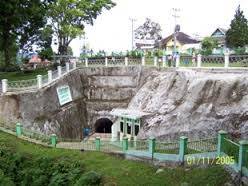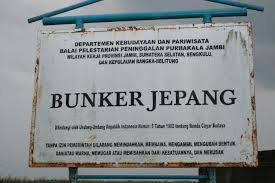1. Baiturrahman Great Mosque
Mesjid Raya Baiturrahman is a large mosque located in the center of the city of Banda Aceh, Aceh province, Indonesia. It is of great symbolic significance to the Acehnese people as a symbol of Acehnese religion and culture, especially since it survived the devastating 2004 tsunami intact. Construction of the mosque commenced in 1879 and was completed in 1881. The mosque survived the massive 2004 tsunami which destroyed much of the rest of the city of Banda Aceh.
2. Borobudur
The Borobudur Temple complex is one of the greatest monuments in the world. It is of uncertain age, but thought to have been built between the end of the seventh and beginning of the eighth century. The building was constructed with more than two million of stone. For about a century and a half it was the spiritual centre of Buddhism in Java, then it was lost until its rediscovery in the eighteenth century. For each direction there are ninety-two Dhyani Buddha statues and 1,460 relief scenes.
more than two million cubic feet of stone was worked by craftsmen to create a giant symbol of the universe.
3. Japanese Bunker
 The Japanese bunker in the town of Bukittinggi was built by Indonesians under forced labor for the Japanese soldiers who occupied Indonesia from 1942 to 1945. This 1,470 meter long underground bunker is 40 meters below Ngarai Sianok (Sianok canyon). There are 21 tunnels in the bunker which were used to store ammunition, as residences, meeting rooms, the Romusha (forced labourer) dining room, kitchen, prison, hearing room, torture room, espionage room, ambush room, and the escape gate. Exploring this complex burrow of tunnels and caves is a real adventure.
The Japanese bunker in the town of Bukittinggi was built by Indonesians under forced labor for the Japanese soldiers who occupied Indonesia from 1942 to 1945. This 1,470 meter long underground bunker is 40 meters below Ngarai Sianok (Sianok canyon). There are 21 tunnels in the bunker which were used to store ammunition, as residences, meeting rooms, the Romusha (forced labourer) dining room, kitchen, prison, hearing room, torture room, espionage room, ambush room, and the escape gate. Exploring this complex burrow of tunnels and caves is a real adventure.You can see how these this place made an effective fortress. The tunnels are three meters in diameter and have walls so thick that sounds cannot be heard from the outside. The tunnels cover a vast area, nearly two hectares, and have six doors. One door is located in Panorama Park while others access Sianok village in the Ngarai Sianok ravine.
4. The National Monument
The Monument Nasional (or Tugu Monas, the National Monument tower) is a 450 ft (137 m) tall tower in Central Jakarta, symbolizing the fight for Indonesia’s independence. It is topped by a 14.5 ton bronze flame, which is plated in 35 kg (1,125 troy ounces) of gold. The design of the monument is meant to combine elements of masculine and feminine. The design based on Lingga-Yoni, the symbol of fertility in ancient Hindu-Javanese belief. This golden flame is intended to symbolize the spirit of freedom and the struggle for independence of Indonesian people.
5. Bogor Palace
Istana Bogor is one of 6 Presidential Palaces in Indonesia. The palace is noted for its distinctive architectural, historical, features, as well as the adjoining botanical gardens. The gardens of the palace have an area of 284,000 square metres (28.4 hectares). The original colonial building on the site of Istana Bogor was a mansion named Buitenzorg (also Sans Souci), which was built from August 1744 as a country retreat for the Dutch Governors, including also during the period of British administration.





Komentar
Posting Komentar